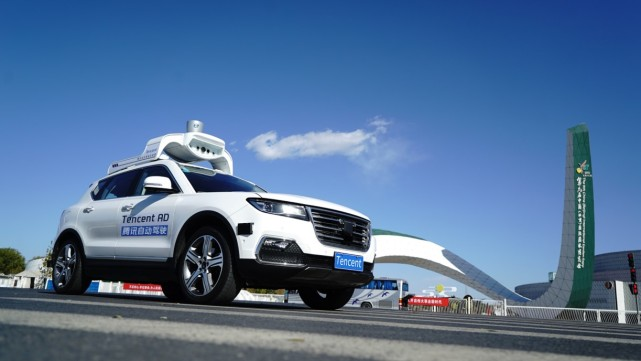Data-Driven: Tencent Supports the Implementation of Autonomous Driving
Recently, I learned from Professor Su Kuifeng’s sharing on a live streaming platform about how Tencent supports the implementation of autonomous driving. Below, I will review the main content of the live streaming and discuss how Tencent is laying out its autonomous driving strategy and what its core competencies are.
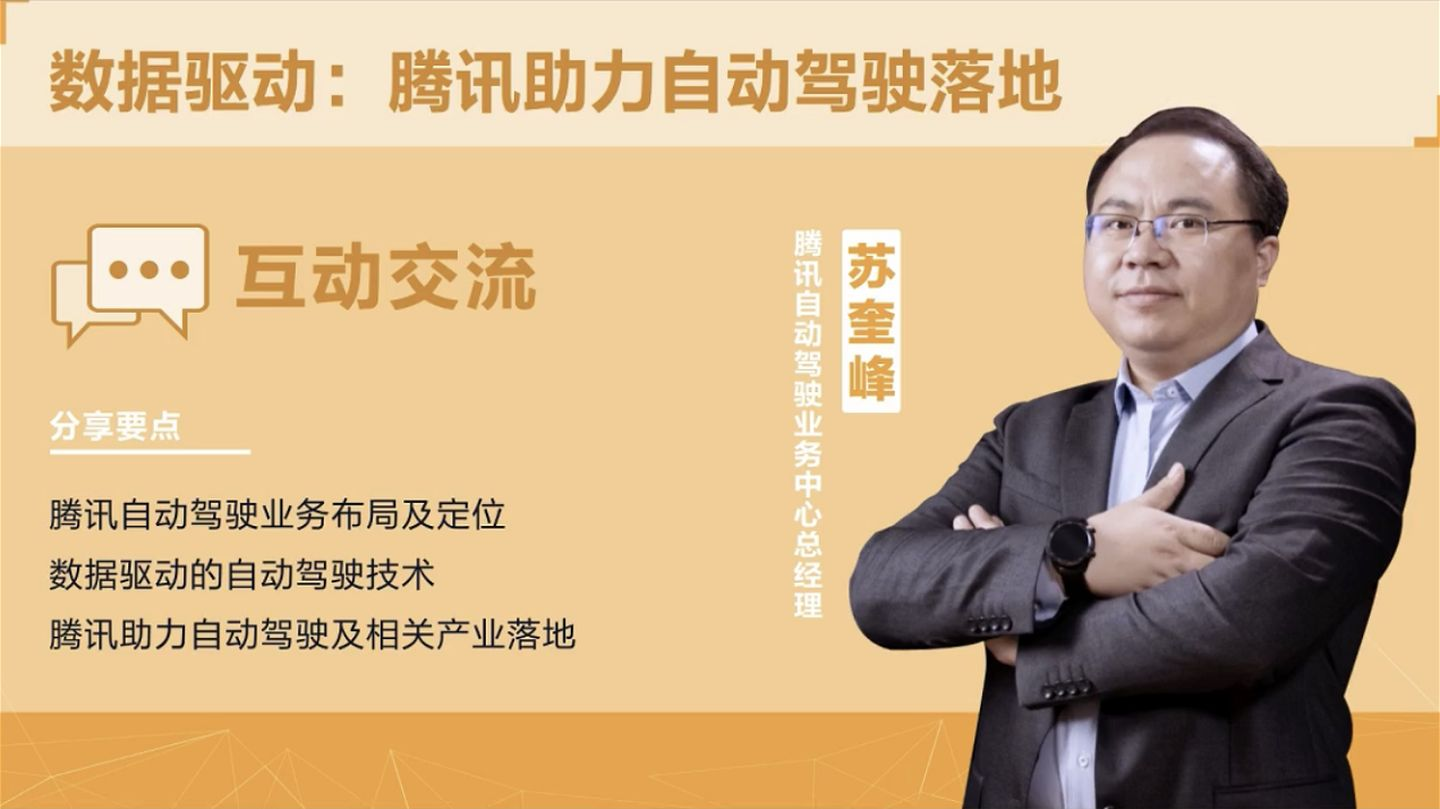
Before discussing anything new, we usually talk about its value first, and autonomous driving is no exception.
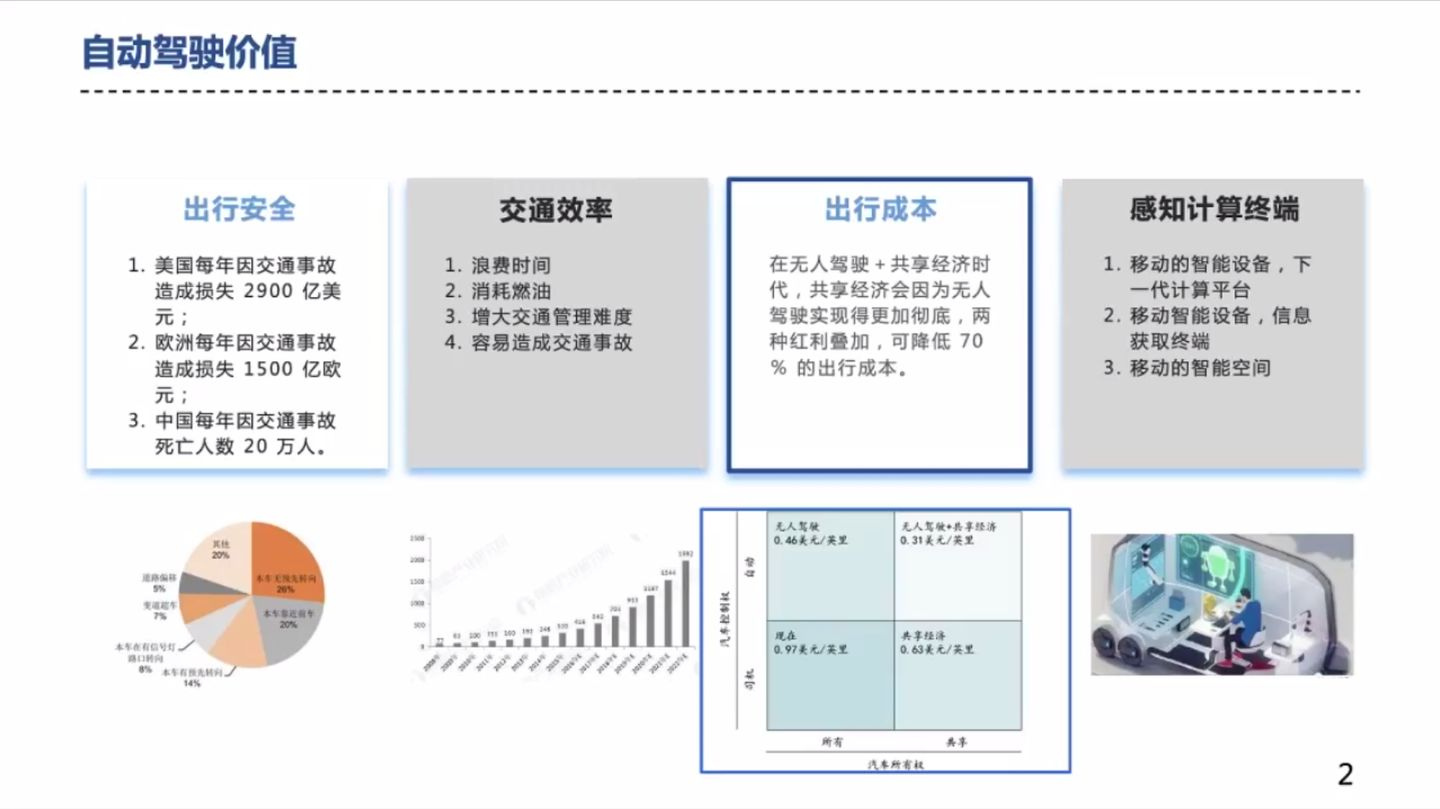
At the beginning of the live streaming, Professor Su did not directly talk about the value of autonomous driving. Instead, he raised an interesting point from a product perspective:
Any new product that meets the following three points must be valuable:
- Improve efficiency;
- Reduce costs;
- Enhance user experience.
It has been widely agreed that autonomous driving can improve travel efficiency, reduce travel costs, and enhance the driving and riding experience of passengers. Therefore, autonomous driving as a product, or technology, is definitely valuable.
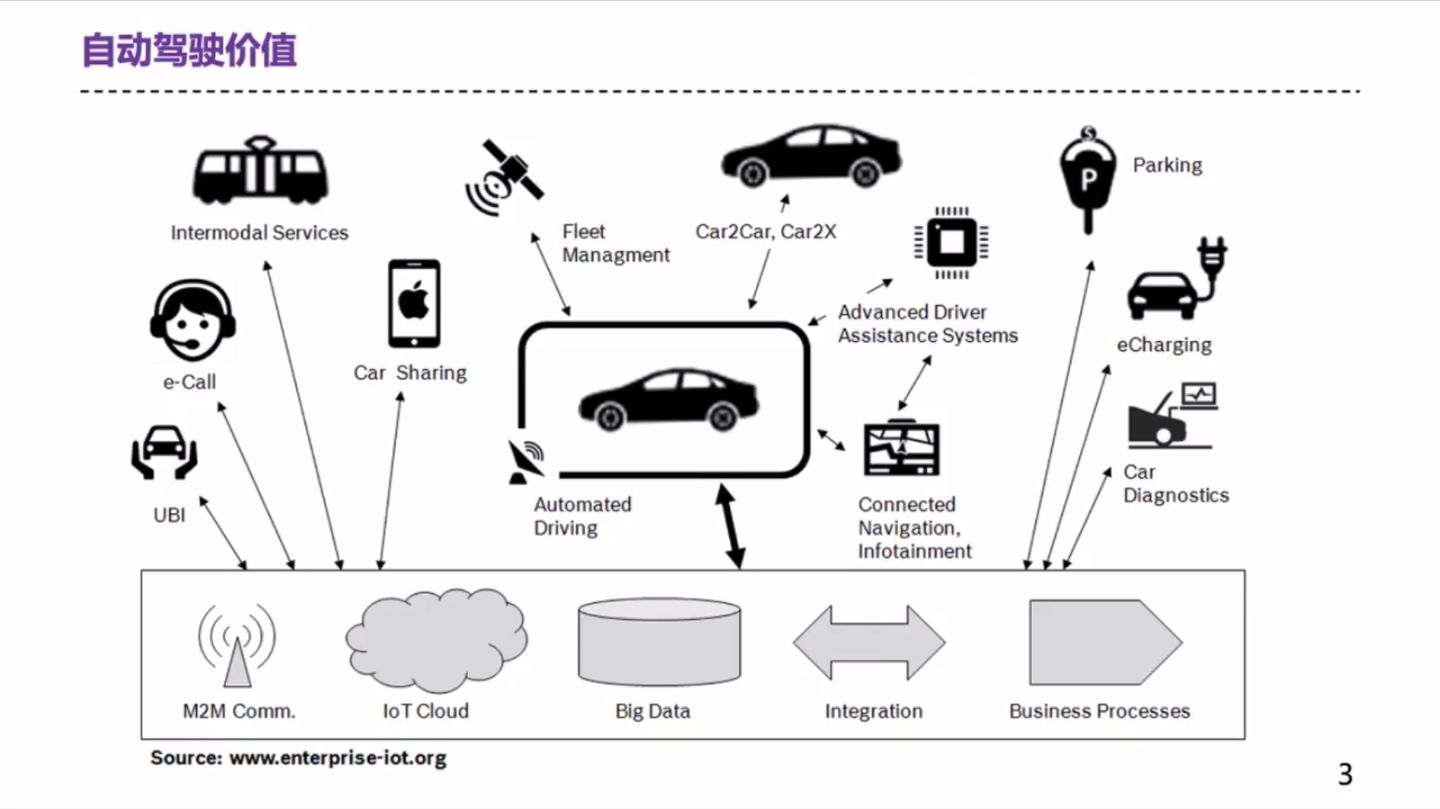
In addition, besides its significant value in safety, efficiency, and cost, autonomous driving also has great radiation effects. As a terminal, autonomous driving cars can provide essential data and services for devices in the IoT and big data fields under the new infrastructure strategy.
Considering the heavy asset attributes of the automotive industry, Tencent, as an internet company, is more willing to focus on its own advantages in software and service layers. Therefore, Tencent has the following layout:
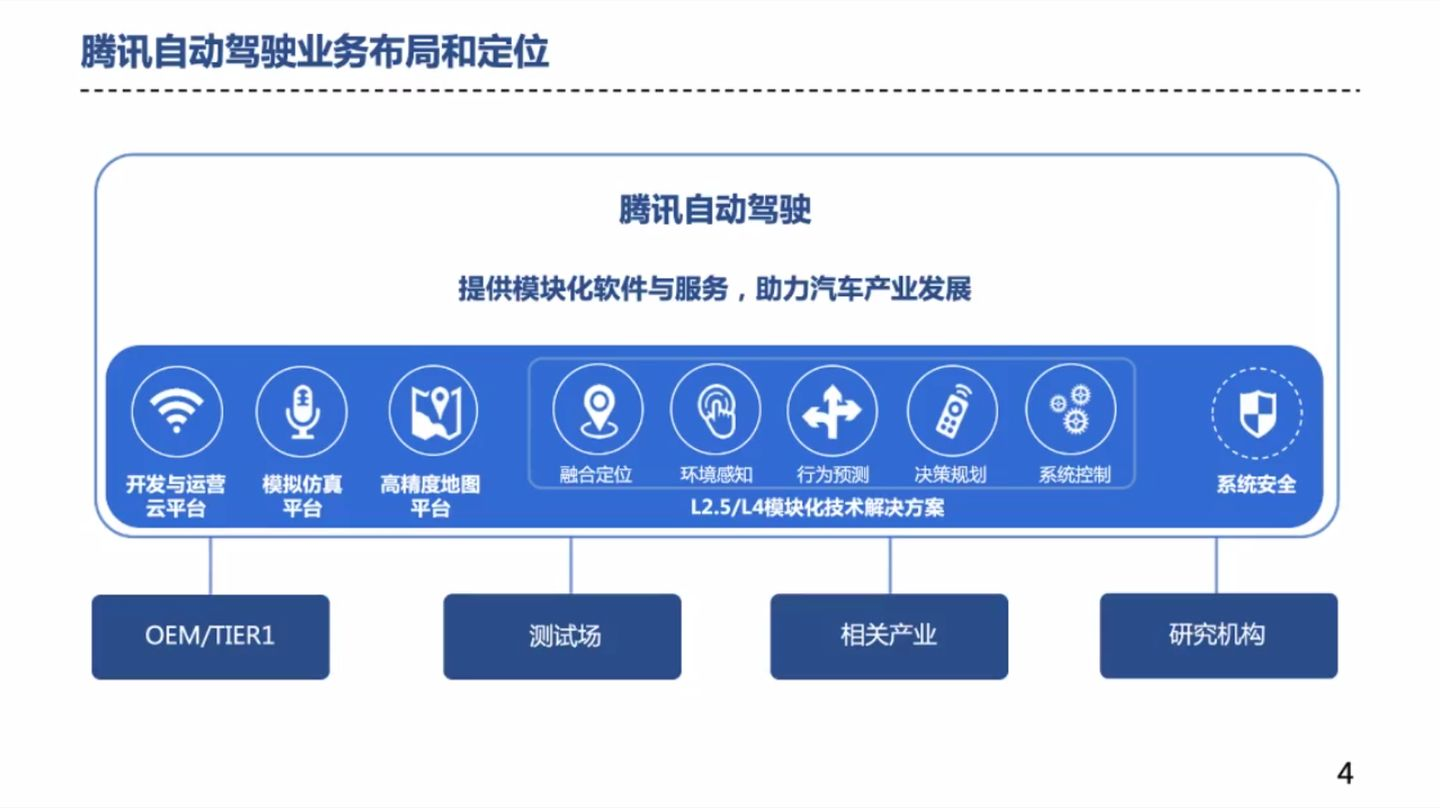
In terms of software and services, Tencent Autonomous Driving uses Tencent Cloud platform, simulation and modeling platform, and high-precision map platform. All three platforms are cloud-based. The vehicle-side solution includes full-stack technology for positioning, perception, planning, decision-making, and control.
It is worth mentioning that in terms of system security, in addition to basic functional safety development, Tencent’s Keen Security Lab (which has cracked Tesla before) will also participate in ensuring information security.
Two major technological approaches in the field of autonomous driving were mentioned in the live streaming: model-driven and data-driven.
 Model-driven technology, simply put, is rule-based and has good interpretability.
Model-driven technology, simply put, is rule-based and has good interpretability.
Data-driven technology, simply put, is based on machine learning and can use large amounts of data to make systems more stable and perfect.
In recent years, data-driven technology has performed increasingly well in perception, decision-making and other fields of autonomous driving, and has been increasingly favored and valued.
In terms of perception:

Compared to model-driven systems, data-driven systems can better adapt to various weather and road conditions, and the detection effect is greatly improved.
When dealing with perception problems, it is difficult for model-based systems to achieve ideal results. The following picture shows scene segmentation achieved using data-driven methods.
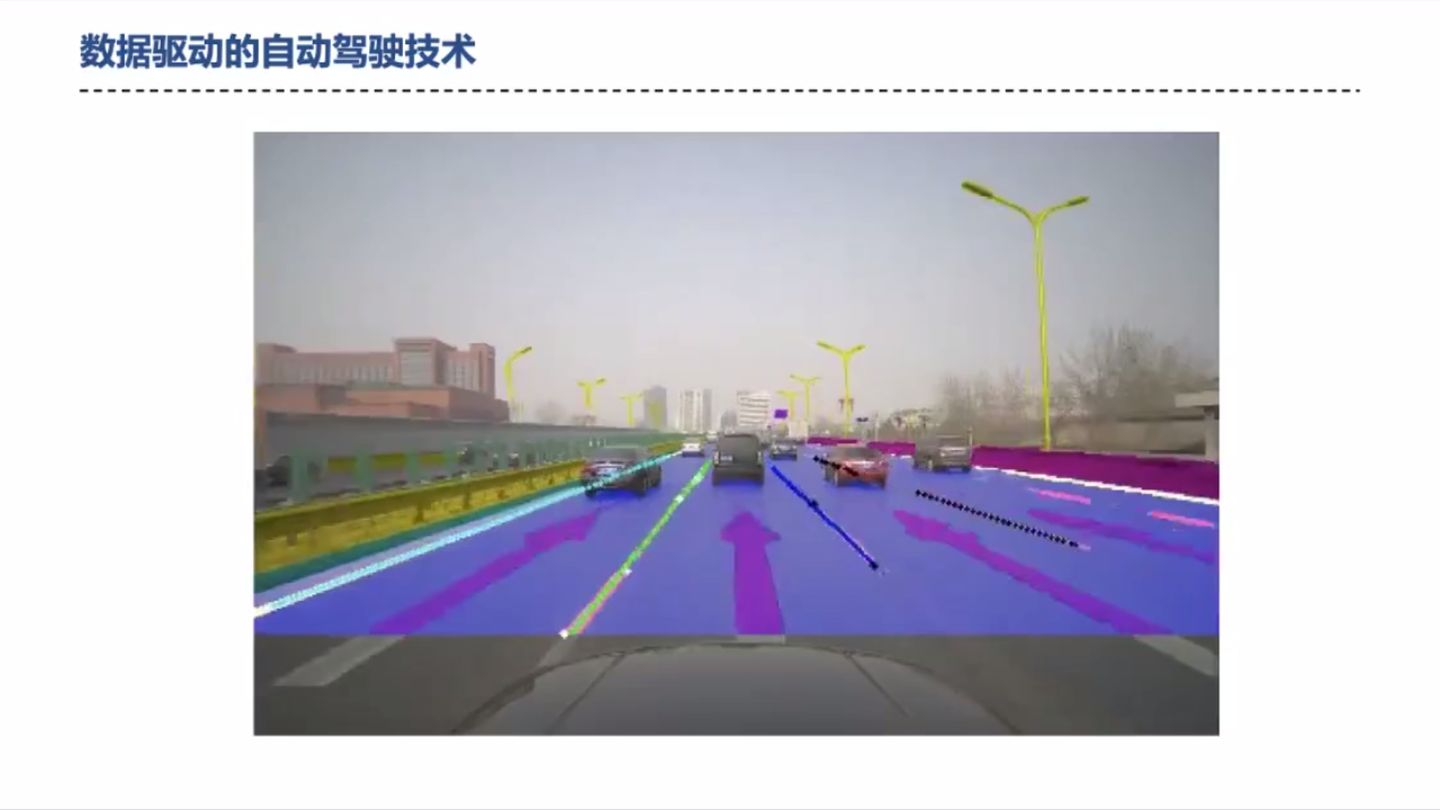
In terms of decision-making/planning:
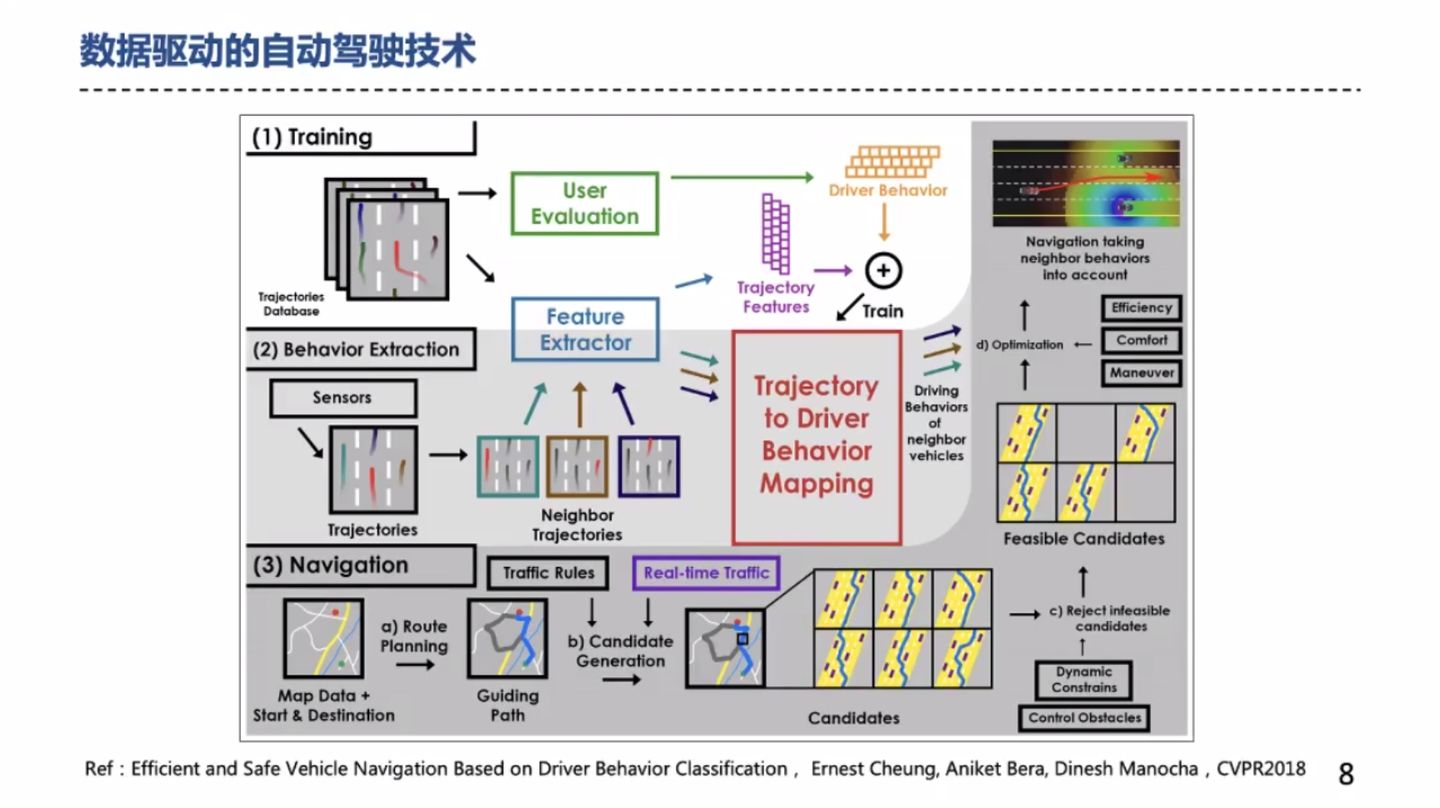
The industry is still mainly model-driven, with data-driven as a supplement. However, more and more teams are beginning to collect driver behavior characteristics, combine them with high-precision maps and navigation information, and train decision-making and planning models to make the system’s decision-making and planning more human-like.
Data-driven methods are not only applicable to decision-making and planning, but also to control modules.
In addition to technology development, testing and verification is also an important link.
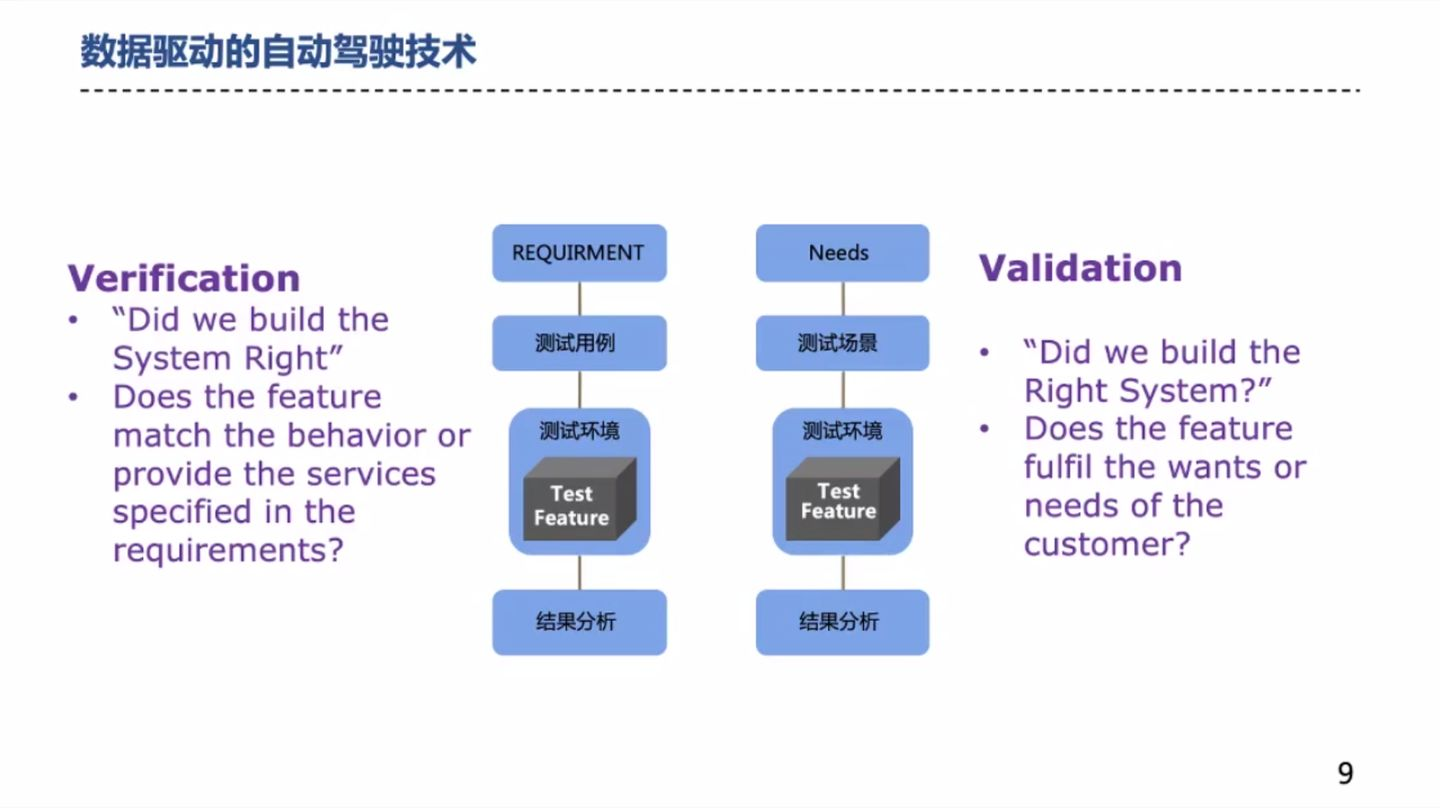
Teacher Su mentioned two types of testing and verification methods: Verification and Validation.
The first type of Verification is to build the system right. If a system designed for a certain function can pass some pre-designed test cases smoothly after completion of design, then it proves that the “system is designed right”. In the autonomous driving hierarchy, Verification can be used to meet the L1 level tests.## Validation of the second type: building the right system
In addition to passing the basic test cases, in order to ensure that the system performs well in scenarios beyond the test cases, the test cases and scenario coverage for Validation need to be greatly increased. For Validation testing of L2 and above levels (i.e., hands-free driving) in autonomous driving, simulation or road testing can be used to increase the number of test cases. Both simulation and road testing fall under the category of data-driven testing.
The above argument is to illustrate that whether it is perception, decision-making, planning, control, or final testing and verification, a large amount of data is needed to drive it all.
Now the focus is on how Tencent Autonomous Driving uses data to achieve data-driven results.
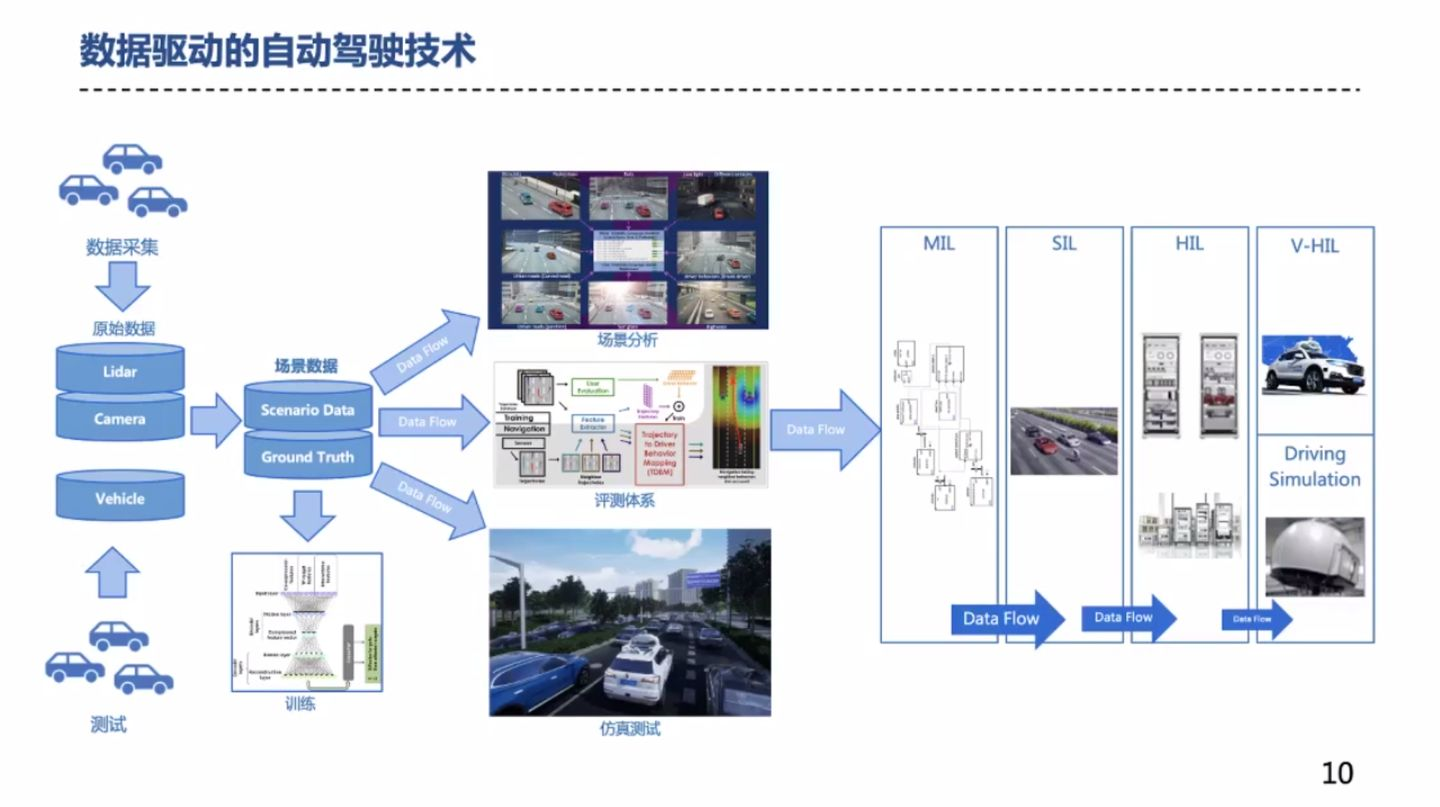
Raw data is collected and accumulated through data collection and testing, after which it is annotated and applied to the model training and evaluation system, and ultimately inputs various in-environment systems.
Tencent’s approach to data is not significantly different from most manufacturers’ technical routes, so where does Tencent Autonomous Driving’s competitive edge lie?
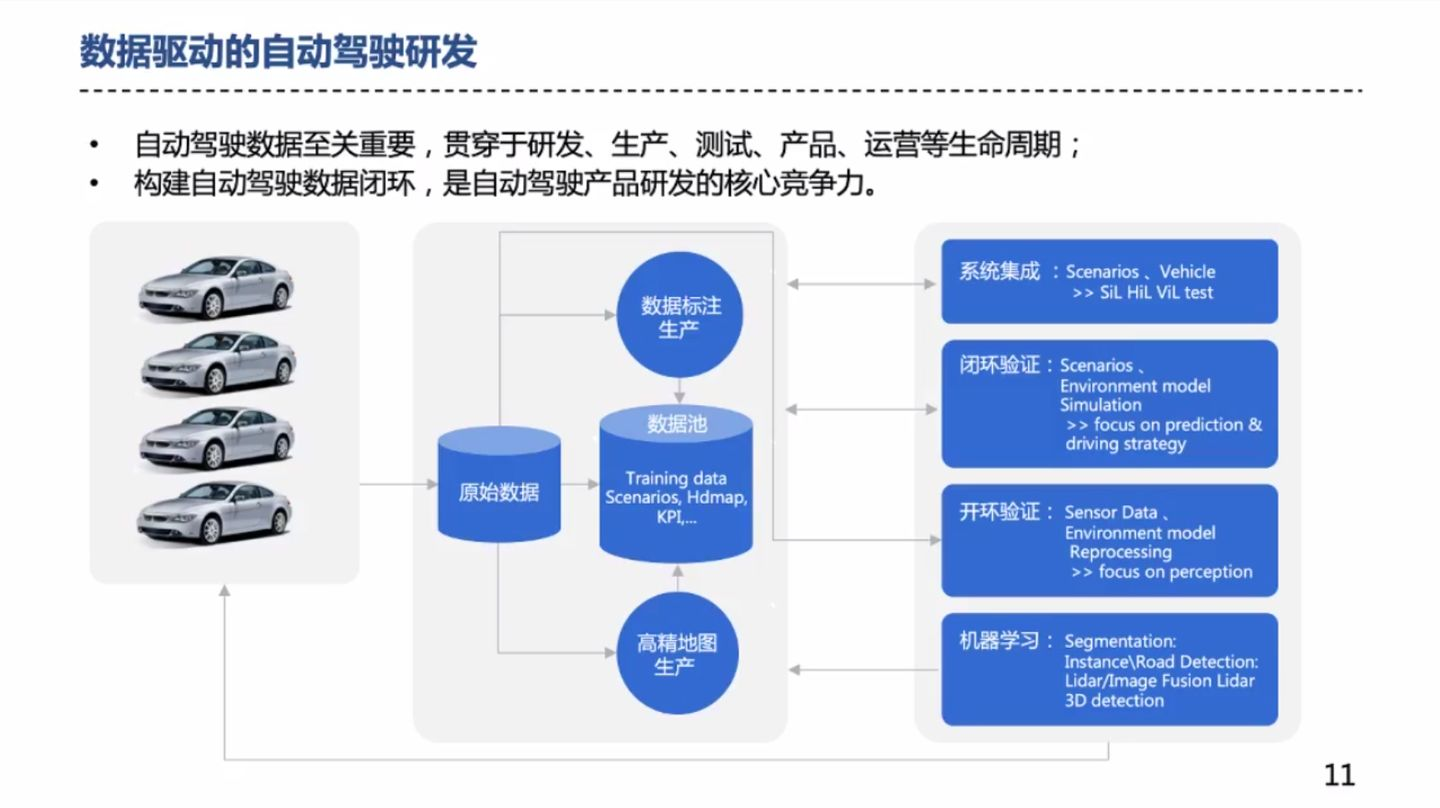
Professor Su emphasized that in the future, autonomous driving algorithms will only account for a small part of the core competitiveness of autonomous driving products. The main core competitiveness lies in building an efficient autonomous driving data closed-loop system. Once the data closed-loop is established, how to maximize data circulation efficiency and reduce data circulation costs is also a core competitiveness.
Subsequently, Professor Su introduced Tencent Autonomous Driving’s detailed data processing process, as shown in the figure.
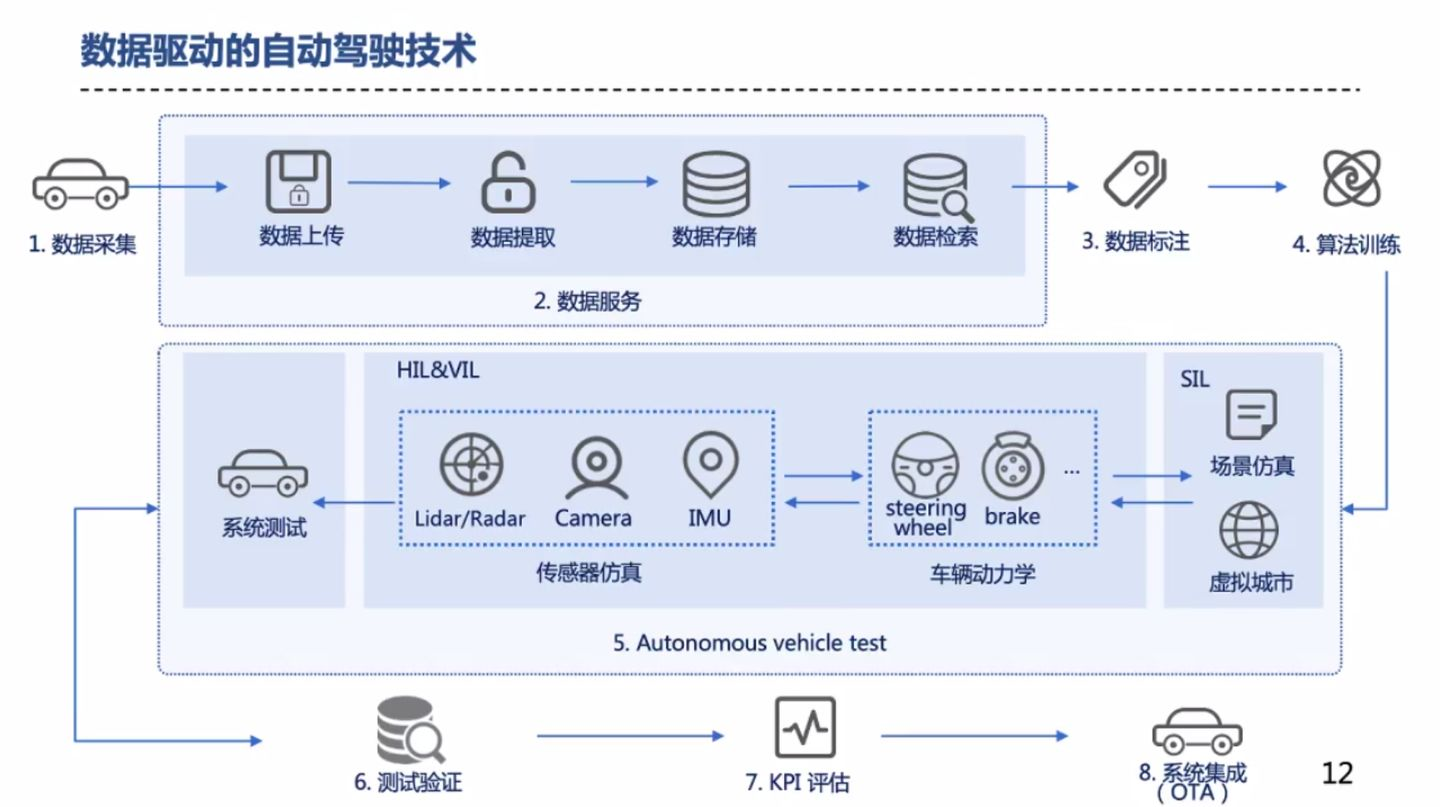
How to use the data closed-loop to optimize algorithms? Professor Su gave an example.
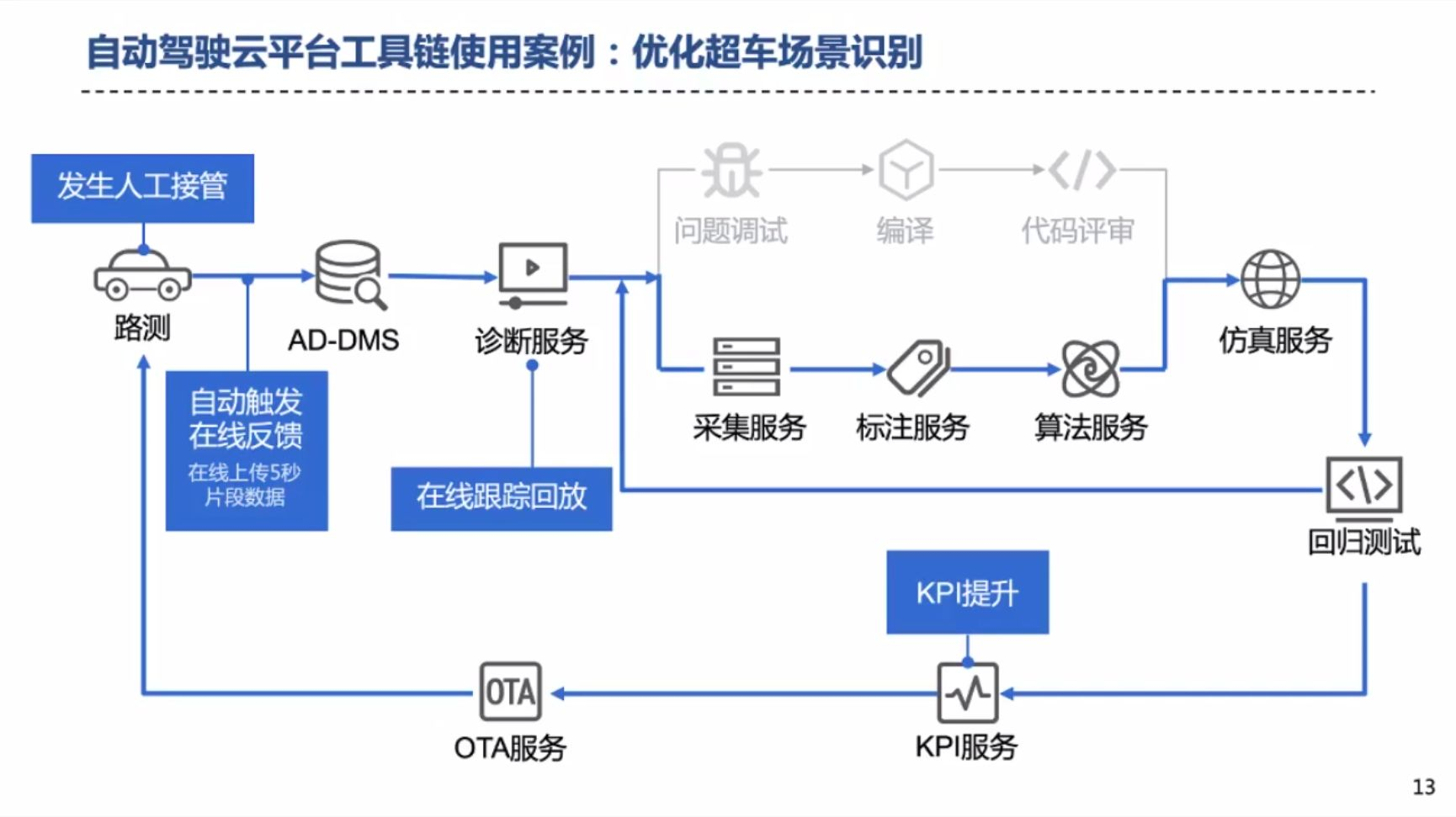 When manual takeover or certain in-car indicators fail to meet standards, the vehicle will upload its data to the Autonomous Driving Data Management System (AD-DMS) for cleaning and retrieval. If the existing dataset is insufficient to solve the problem, data collection and annotation services will be initiated, and the larger dataset will be used to retrain models and test algorithms. After the metrics improve or the issue is resolved, the updated software will be delivered to the vehicle via OTA service.
When manual takeover or certain in-car indicators fail to meet standards, the vehicle will upload its data to the Autonomous Driving Data Management System (AD-DMS) for cleaning and retrieval. If the existing dataset is insufficient to solve the problem, data collection and annotation services will be initiated, and the larger dataset will be used to retrain models and test algorithms. After the metrics improve or the issue is resolved, the updated software will be delivered to the vehicle via OTA service.
Apart from the data loop, there are various development processes for algorithm services, which Su did not elaborate on.
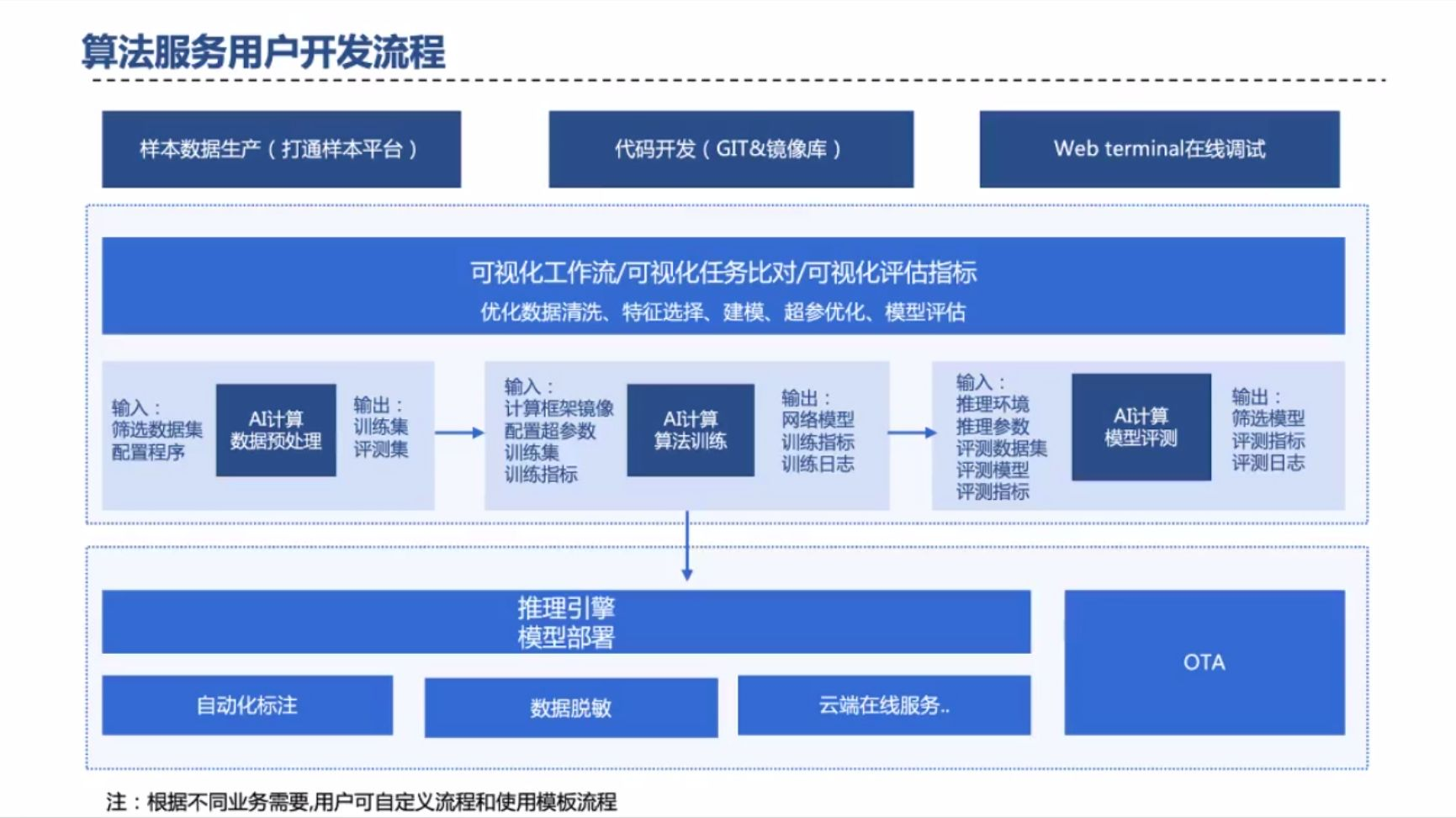
Su then highlighted Tencent’s simulation solution TADsim (Tencent Autonomous Driving Simulation).

TADsim provides support for both offline standalone and cloud versions. The standalone version enables engineers to debug algorithms with greater accuracy locally. The cloud version allows for more scenarios to be generated with virtual cities, creating more corner cases to enhance algorithm robustness.
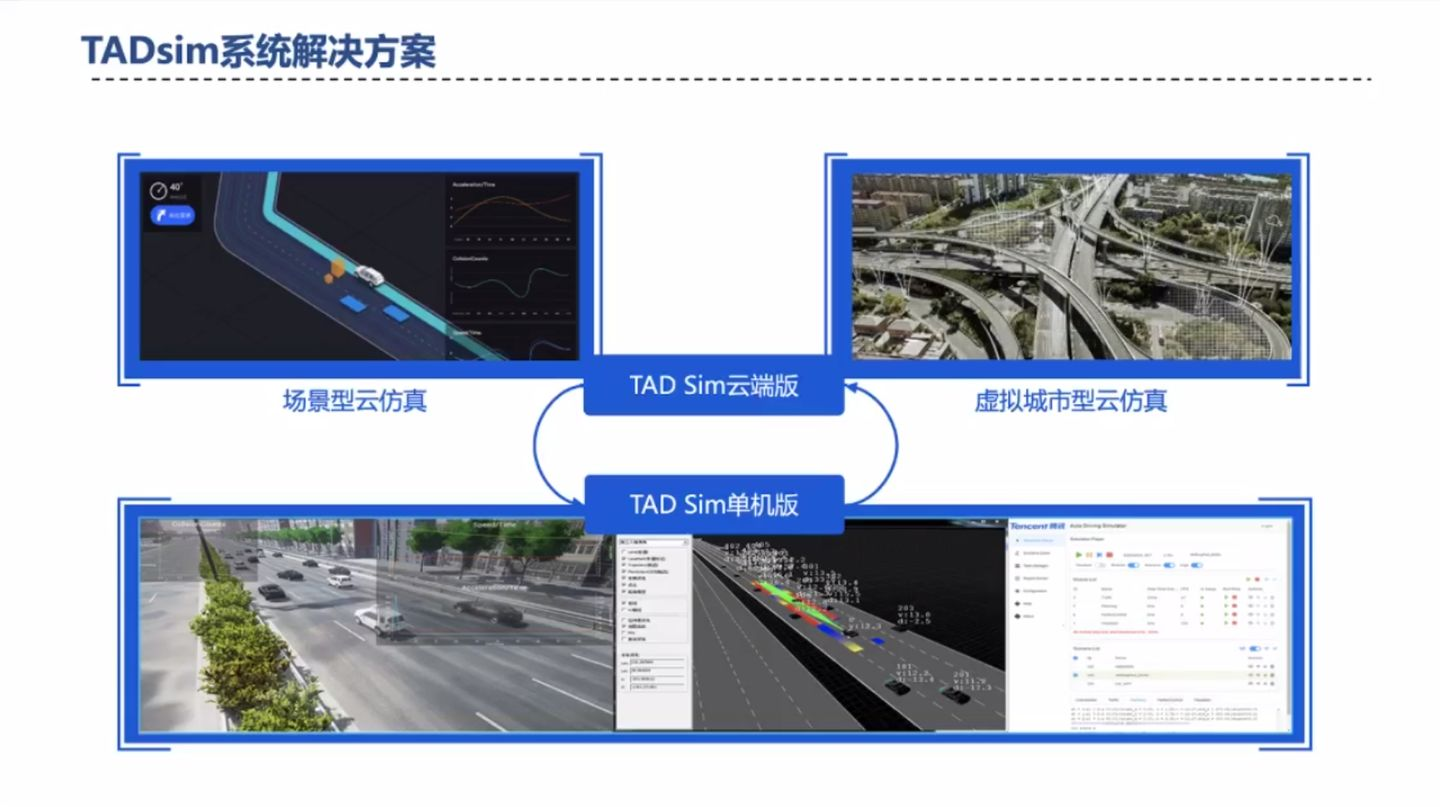
The following are various scenes generated by TADsim, such as different traffic and pedestrian scenes, sensor simulation, and weather simulation.
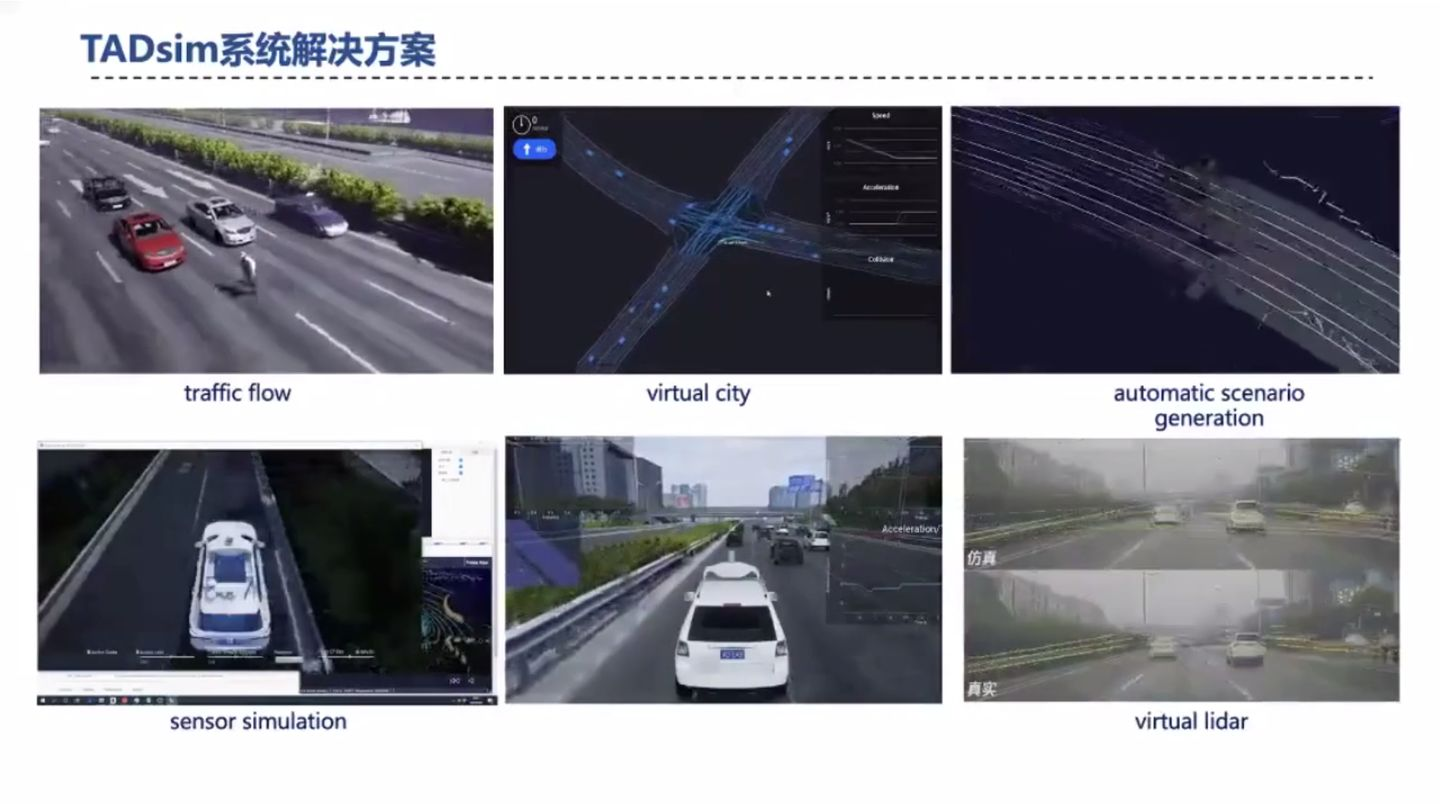
Finally, Su reiterated that the core competitiveness of autonomous driving products lies in the efficiency and cost of the data flow throughout the entire data loop. The higher the efficiency and the lower the cost, the stronger the product’s competitiveness. More and more OEM and autonomous driving start-ups have also recognized this point.
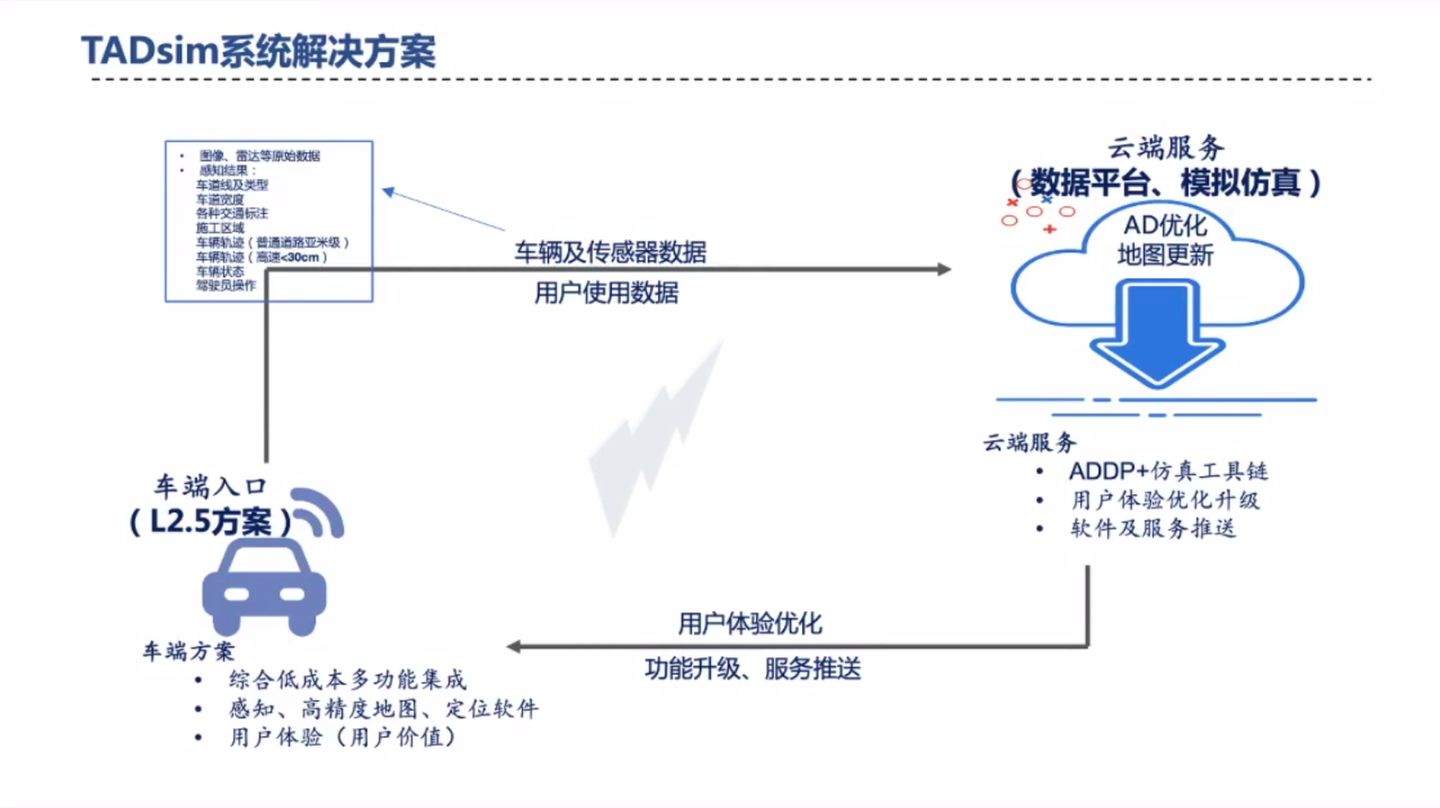
During the QA session, Su raised several viewpoints when answering questions:
-
Do not rigidly apply a certain product’s autonomous driving level (L1~L5), focus more on whether the product can solve users’ pain points.
-
Tencent does not manufacture vehicles or sensors, it only provides software services.3. Tencent does not focus on a particular vertical area (such as Robotaxi or unmanned logistics), but will put more effort into the passenger car sector to serve car manufacturers using existing technology.
The above is what Professor Su Kuifeng shared about Tencent’s data-driven autonomous driving business.
Personal opinion
Data not only improves data-driven algorithms but also helps generate various autonomous driving scenarios. Its importance has been recognized not only by internet giants like Tencent, but also by autonomous driving start-ups and a large number of OEMs.
For example, Waymo, a leading autonomous driving company, not only conducts routine tests in its own simulation software Carcraft but also dispatches a large fleet for actual road testing to collect data. Tesla even directly collects various data through users’ normal driving.
However, so far, domestic manufacturers do not seem to have implemented or planned such a large-scale autonomous driving fleet because of the small amount of data and the inability to achieve automated data processing, which inevitably leads to high costs for data collection and labeling.
In addition, Waymo and Tesla’s large-scale data acquisition are based on the same set of sensors (Waymo is self-developed, and Tesla’s latest two generations of products are based on the same set of sensor solutions). Tencent’s data, obtained from serving different car manufacturers, comes from a variety of sensor combinations from different Tier 1 suppliers, making the maintenance cost of such data significant.
In the context of not developing sensors, how to handle data from non-homogeneous sensor solutions is perhaps one of the biggest challenges Tencent is facing.
This article is a translation by ChatGPT of a Chinese report from 42HOW. If you have any questions about it, please email bd@42how.com.
